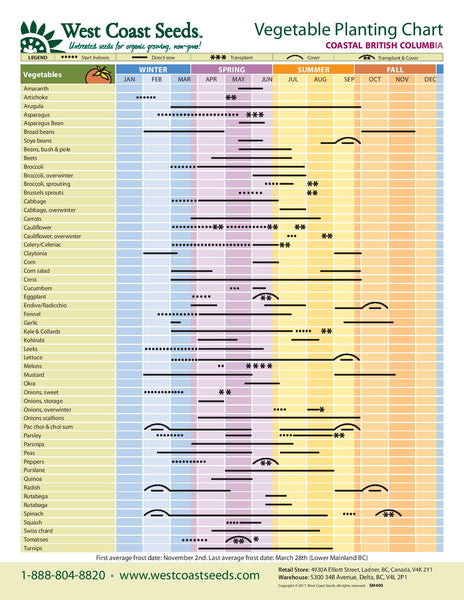How to Start Veggie Seeds

"For everything you want to know, take a seed and watch it grow"
You can plant a seed and watch it develop into a plant that will bear you produce, which you can harvest and then prepare for your dinner all in a matter of months. Along the way you will also learn everything that the seed needs from you to grow; how much light, what temperature, how deep to plant it, do you start it indoors or outdoors, how much water and when you should feed it. These are all things that need to be considered but if you have never tried before, or have failed in the past, don't be alarmed - these are all things we can learn to do, you may not always be successful the first time but start small and grow a little more each year and you will learn 'everything you want to know'.
Timing is very important. You can do everything right with your seeds but if your timing is wrong your seeds will probably die (sorry for the big heavy). Obey the timing guidelines for each plant and you are sure to have far greater success. It's important to recognize that there are three main planting times for veggies.
1. March/April - Cool Season Crops
This planting group includes broad beans, peas, broccoli, cauliflower, cabbage, kale, leeks, spinach, radishes as well as all kinds of lettuce, salad greens, mustard greens and oriental greens. These plants love the cool spring weather and often produce before the heat of summer while some can be repeatedly planted through summer.
2. May/June - Warm Season Crops
This planting group includes all the plants that like warm soil like beets, carrots, fennel, and beans as well as the plants we either start growing indoors ourselves or purchase as starts to transplant to the garden around May Long Weekend; tomatoes, peppers, cucumbers, melons, pumpkins, and squash. This group not only likes but needs warmth; especially on warm nights so watch the weather and don't rush. These heat lovers can benefit greatly by being covered when they first go out into the garden. Remay is a white fabric sold by the foot to cover plants and protect them from frost. Having a little Remay on hand can be helpful. Gardeners can also get pretty creative; one simple way is to use a clear garbage bag over a tomato cage, even if what you are covering isn't a tomato plant. It's amazing how much warmer this will keep your plants for the first week or so that they are acclimatizing to outdoor conditions.
3. July/August - The Fall Veggies (Summer Planted Veggies)
This planting group often confuses gardeners. Fall gardening seems like something you would do when the leaves begin to change when in fact it sometimes coincides with the arrival of our summer weather (late July). Maybe we should refer to it as the 'Summer Planted Veggies'. These plants include a second crop of; peas, broccoli, cauliflower, cabbage, kale, spinach, swiss chard, turnips, onions, garlic as well as many kinds of lettuce, salad greens, mustard greens and oriental greens. You will probably notice that a lot of these are the 'Cool Season Crops' from March and April.
If you are an established veggie gardener then I know you are probably already growing some veggies. For those just getting into growing, it is time to get your hands in the dirt:) Get your beds weeded, your compost or manure spread, a wee bit of lime on the plants that like it and add in some Complete Organic Fertilizer (we sell it in our bulk bins).
Lastly don't forget your seed packets give specific information on the depth of planting and spacing we also give away the wonderful, West Seed Garden Guide which is in our store in the Spring and FREE!
I hope you have a bountiful year in your garden.
Shauna Lambeth ©
Sign up here and never miss an article Our Monthly Newsletter


